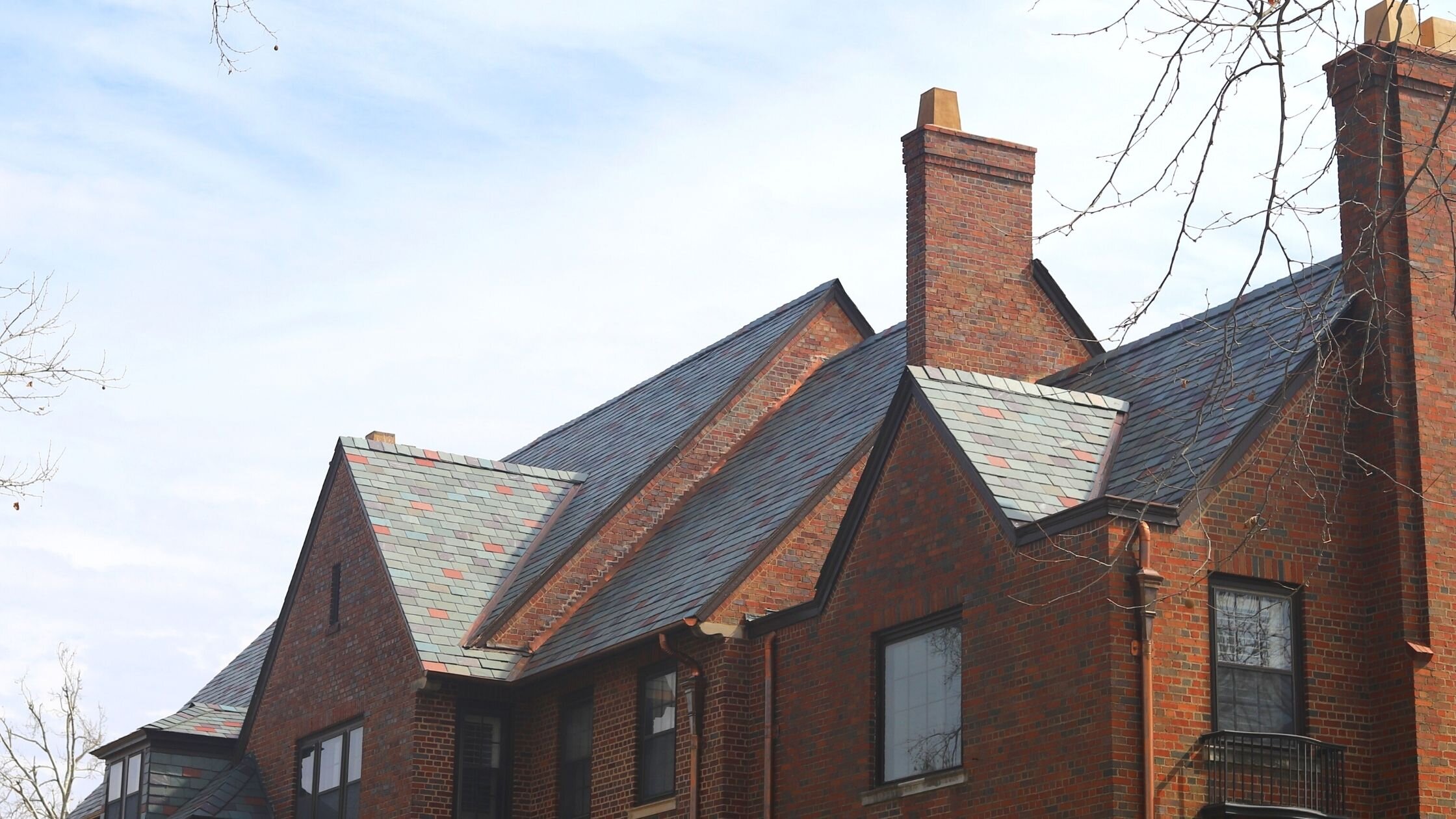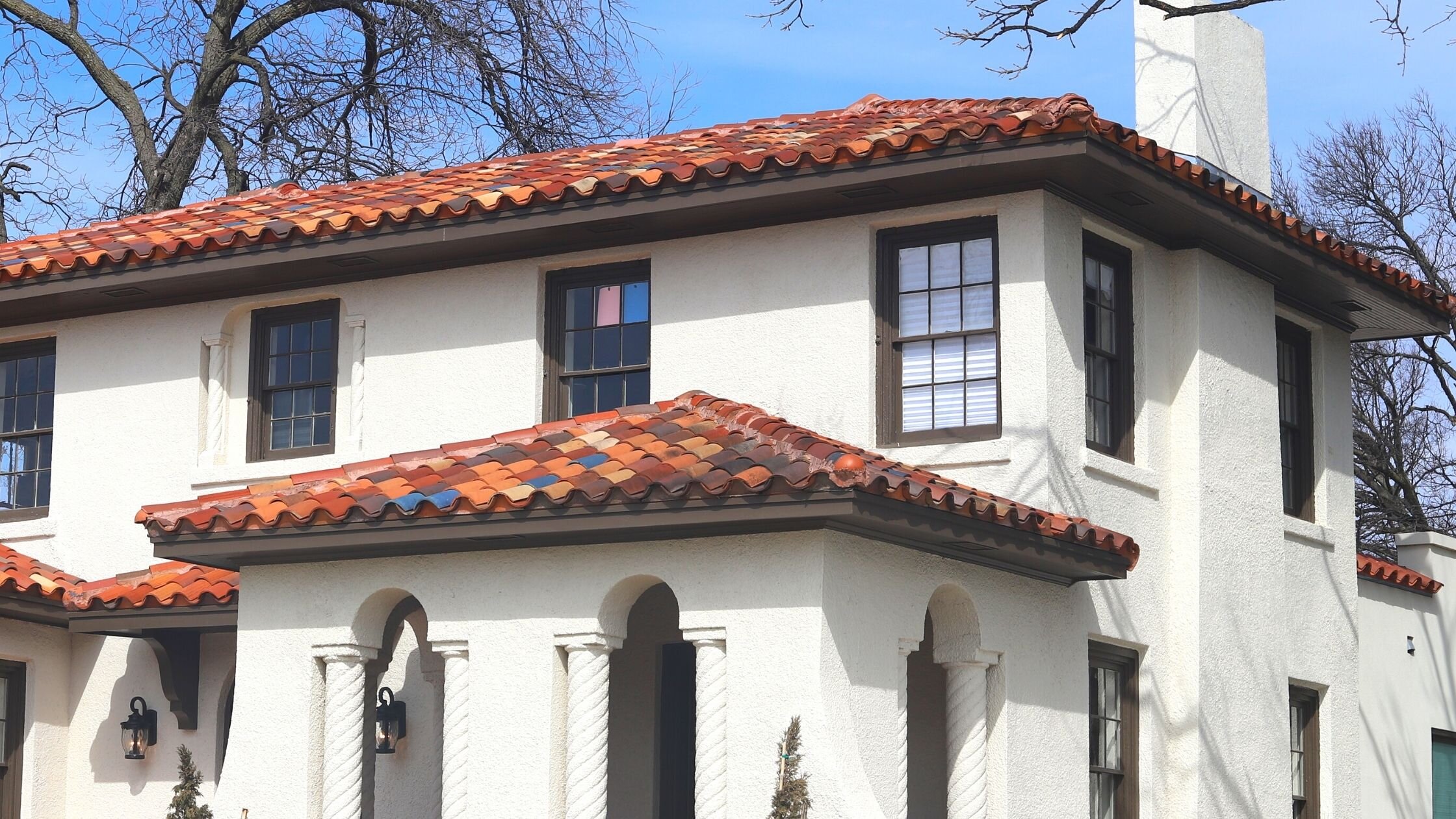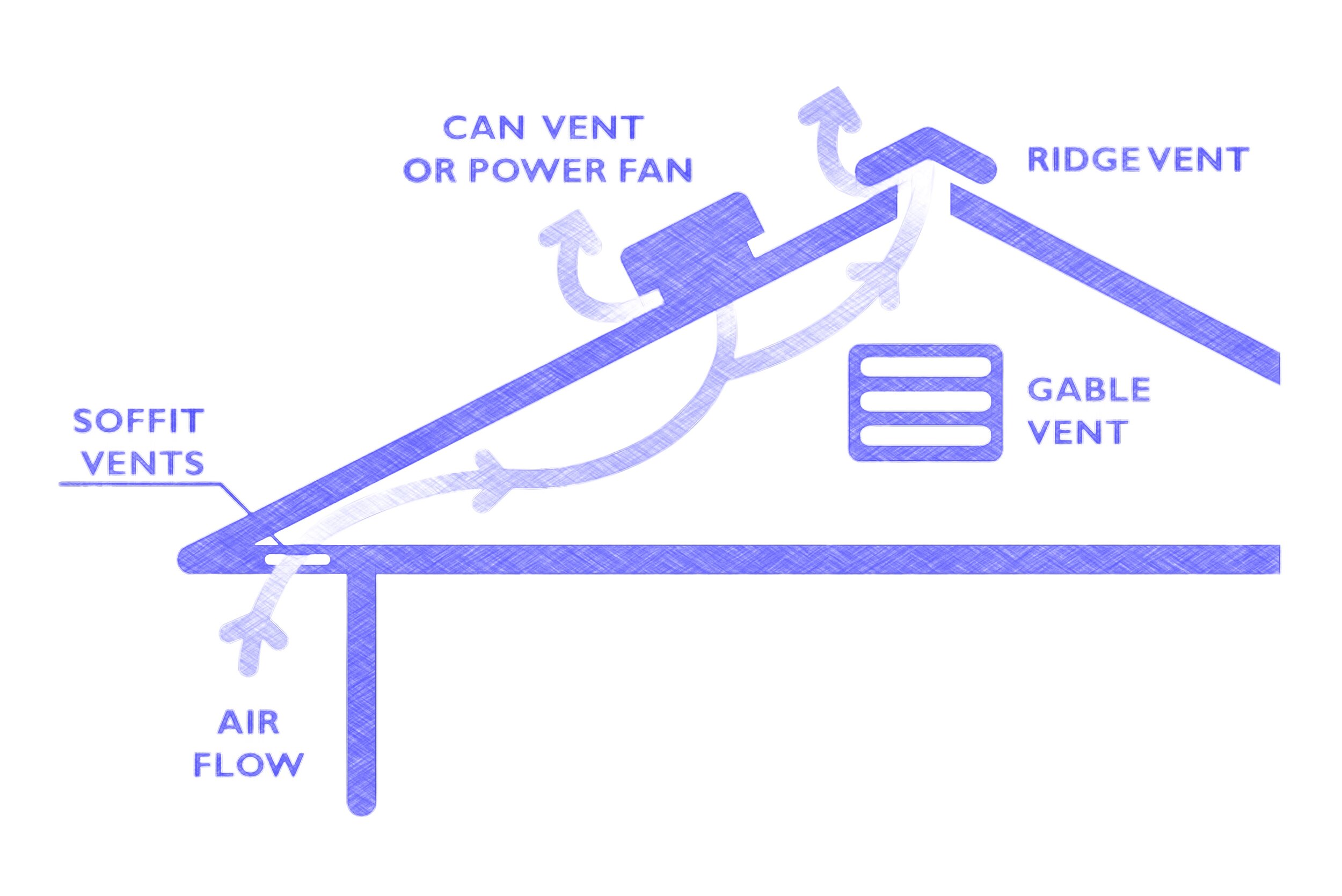Most homes in Oklahoma City and Norman classified as historic were built between 1900 and 1930. These homes make up many unique architectural styles like the craftsman, prairie, mission, Spanish, Tudor, and many more. These styles and the period in which they are built can significantly impact the roof design, construction, and original material. These unique characteristics are what make historic homes valuable and enjoyable to own and occupy. When evaluating your home for roof repair or replacement, you need to take an inventory of your roof's unique features so that they may be preserved, maintained, or improved.
This is an excerpt from our free ebook, Field Guide: Historic Home Roofing
ORIGINAL MATERIALS
Historic homes usually do not have the original roofing in place. However, in some homes, the historic fabric is still present and part of the unique character. The most common types of landmark roof materials are slate, tile, wood, and metal.
Heritage Hills, Oklahoma City
SLATE ROOFS
Slate Roofs are ubiquitous on large homes with Tudor or gothic architecture styles. These tiles can be costly to manufacture, transport, and install. Slate materials can last many hundreds of years with minimal maintenance.
In 1923 slate roofing materials were considered durable but apt to breakage, needing routine repairs, beautiful, fire-safe but not weathertight, challenging to install, and very expensive.
Heritage Hills, Oklahoma City
CLAY TILE ROOFS
Tile Roofs can be found in many homes' styles but are most often found in Spanish and mission-style architecture. Like slate, they are costly and last for hundreds of years.
In 1923 tile roofing materials were considered durable but apt to breakage, needing routine repairs, beautiful for certain types of homes, fire-safe but not weathertight, challenging to install, and very expensive.
Heritage Hills, Oklahoma City
WOOD SHINGLE ROOFS
Wood Shingle or shake shingle roofs were the most common roofing material used in Oklahoma before 1950. Many roofs still maintain the original wood roof, but it may be severely deteriorated and covered by modern asphalt shingles. In many situations, it may be appropriate to replace a wood roof with a modern architectural roof.
In 1923 tile roofing materials were not considered durable with a 10 year life, needing routine repairs & painting, beautiful when aged, combustable & not weathertight, challenging to install, and hence expensive.
METAL ROOF PANEL
Metal Panel and shingle roofs can most often be found on southern victorian homes and folk houses. Historic metal roofing is not commonly found on historic homes in Oklahoma.
FRAMING AND DECKING
Framing methods before 1940 were different in many ways. Because the most available and affordable shingle material was wood shake shingles, roof framing was done with this in mind. Many roofs were not fully sheathed but were covered with shingle lathe and no moisture barrier. When the need for replacement and repair happened decades later, many homeowners choose to overlay the new composition shingles over the wood shingles' top. This practice is no longer accepted by most building codes. Current building codes require all roofing layers to be removed and sheathing to be installed over the shingle lathe.
CORNICE
The cornice is the exterior trim at the roofline. It may include the rafter tails, facia, frieze, plancher, soffit and additional detail cornice millwork. Each cornice assembly is unique to the character of the home. Craftsman homes are known for their large overhanging roofs, exposed rafter tails, corbels and plancher. Tudor is known for its prominent gables, minimal overhang, and frieze board with shingle molding. These millwork details contribute to the historical character and have a functional purpose that reduces the damage caused by moisture and sunlight. When considering a roof replacement, you must view these details, protect the character-defining features, and choose a roofing system that will complement the historic home.
HISTORIC GUTTERS
Gutters have been used for hundreds of years and are an essential part of a home water management system. Type, style, and color should also be evaluated. Metal-lined wood gutters and half-round copper gutters are typical in many historic homes. After 1950, galvanized ogee gutters become very popular. Most modern gutters are seamless ogee produced on-site with powder-coated aluminum.
METAL RIDGE CAP
The roof ridge is an essential and functional detail required on a roof assembly. Historic roofs may have a decorative architectural metal ridge. Often these ridge caps were installed on the original roof, then saved and reinstalled when the roof was modernized. These metal ridges should be protected, maintained, and reinstalled when practical.
VENTILATION
Attic ventilation is a critical component of managing humidity and temperatures in the home. A roof without proper ventilation will deteriorate prematurely. Ventilation methods and procedures have changed over the last eighty years. It is important to identify where the intake and exhaust vents are located on your home. The vents need to be located in the appropriate areas and must be the correct size. Modern siding and roof renovations are notorious for removing, closing, and obstructing historic ventilation.
NEIGHBORHOOD
Historic districts are not like suburban track homes. The properties often have narrow or shared driveways, tall mature trees and landscaping, overhead power lines, steep roofs, and high eaves. These unique neighborhood features add fantastic character. However, they add unique challenges when repairing or replacing a roof.
FINAL THOUGHTS
Roofing a historic house can be a challenge and can significantly impact the home's curb appeal and protective umbrella. Before you start any project, check with your local historic preservation department to ensure that all repairs will meet building code and be historically appropriate.
If you would like to learn more about roofing your historic home, please down load our ebook, Field Guide: Historic Home Roofing. This book covers all the above topics and also, inspecting your roof, historic preservation guidelines, repair or replace and what is the right type of roof. We also include a checklist which has an inspection guide and historic home inventory.















Back by popular demand! It feels soft and lightweight, with the right amount of stretch. It's comfortable and flattering for both men and women.
• 100% combed and ring-spun cotton (Heather colors contain polyester)
• Ash color is 99% combed and ring-spun cotton, 1% polyester
• Heather colors are 52% combed and ring-spun cotton, 48% polyester
• Athletic and Black Heather are 90% combed and ring-spun cotton, 10% polyester
• Heather Prism colors are 99% combed and ring-spun cotton, 1% polyester
• Fabric weight: 4.2 oz (142 g/m2)
• Pre-shrunk fabric
• Side-seamed construction
• Shoulder-to-shoulder taping